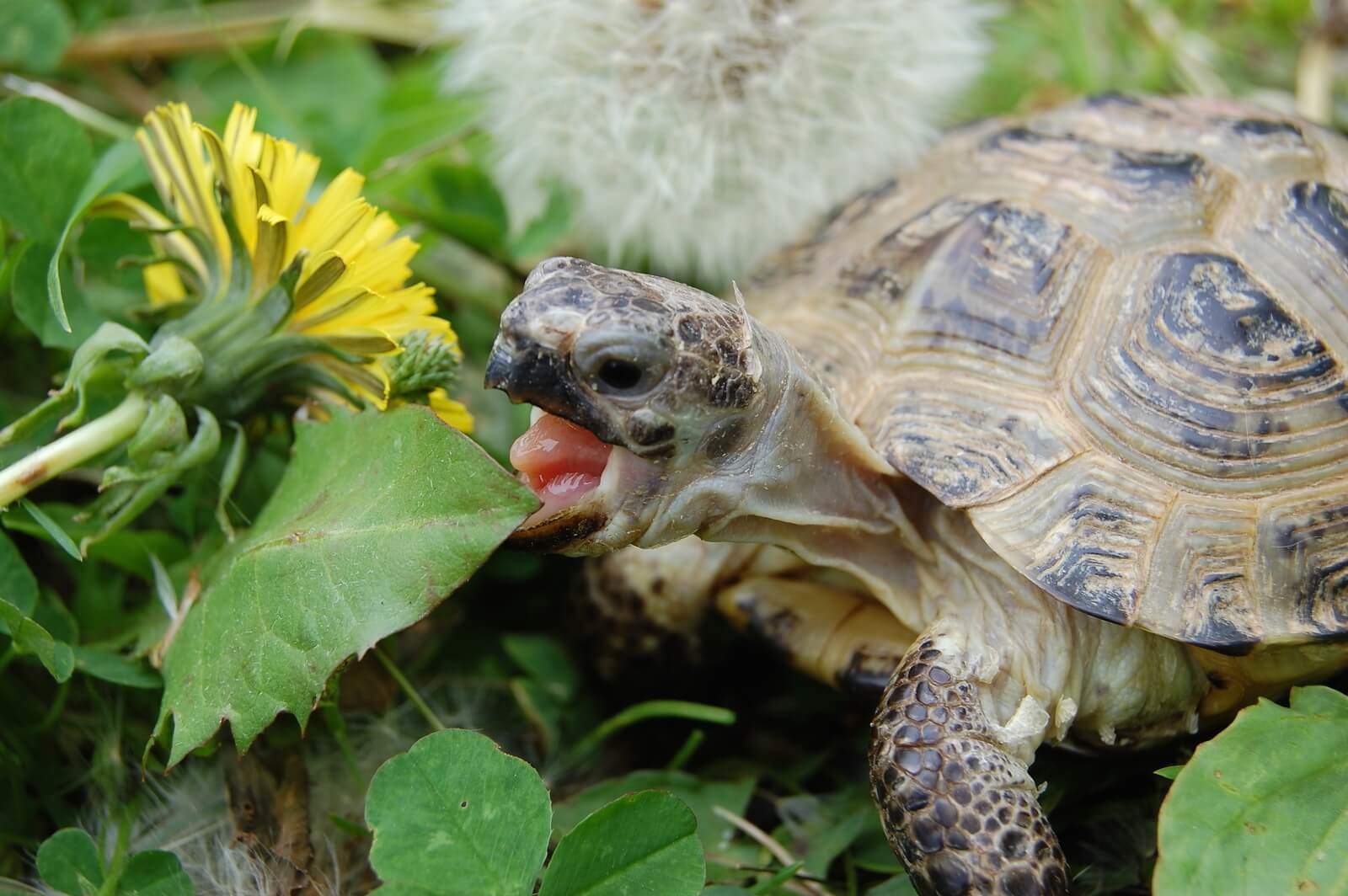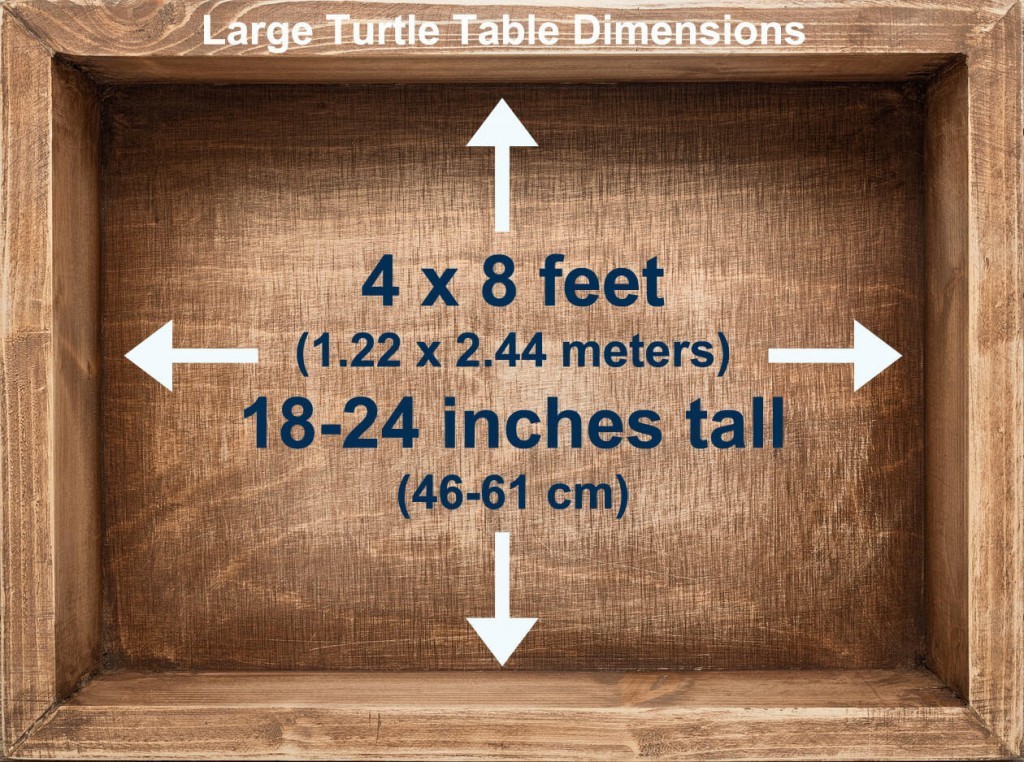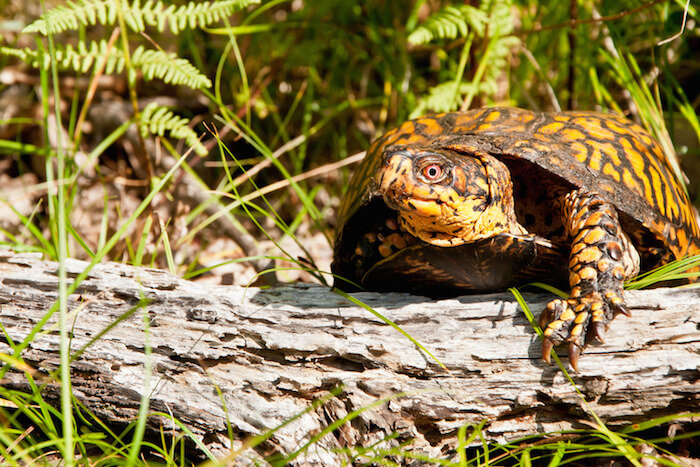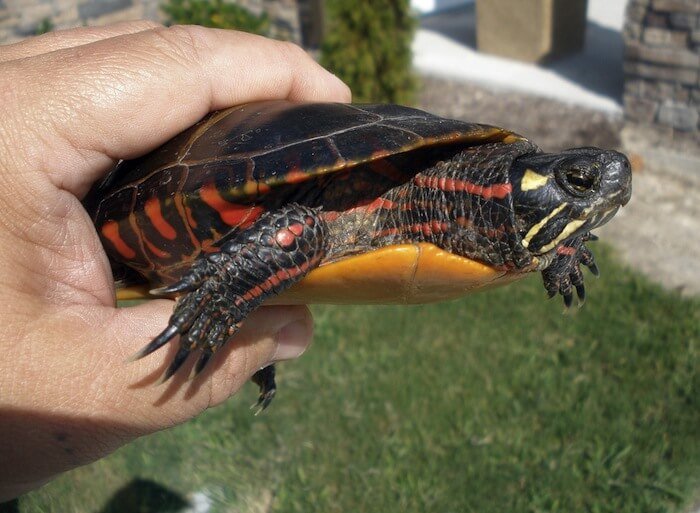There are several options for housing your turtles and tortoises but not all of them are suitable for every type of species. Before you create a turtle habitat setup, it’s important you understand the needs of the type of turtle or tortoise you have or plan on getting. Once you have an understanding of what their habitat requirements are, you can begin the process of setting up their new housing.
Turtle Habitat Basics | Types of Housing Options | Species Requirements | Related Care Guide Content
For the most part, turtles big or small will do best in a large habitat that resembles that of what they their natural habitat is like.

This means you need to take into consideration what temperatures and humidity the living space needs to be as well as the types of substrate, vegetation and decorations they will like best. If you don’t provide them with what they need, you are setting yourself up for failure and an unhealthy turtle or tortoise.
Different Types of Turtle Habitats
Learn about the following types of habitats that you can house your turtle or tortoise in
Outdoor PensIndoor Turtle TablesAquatic Turtle TanksWater Turtle Ponds
Turtle Habitats
Basking Platforms
General Habitat Setup Information
If you have a small to midsized tortoise, consider a large outdoor pen or a large indoor turtle table.
If your tortoise species is large growing, an outdoor pen is the only real option. If your geographical region doesn’t offer warm temperatures year around or more so, has very cold winters, we suggest getting a small tortoise species instead.
It will likely end up costing you a lot of money trying to keep these large creatures warm. Some tortoise owners that fit this description have been known to convert old green houses into a habitat for their large pets.

If you own a box turtle species, consider a medium to large size outdoor pen or an indoor turtle table. Aquariums are acceptable if they are large, 100 gallons (378 liters); roughly 3ft x 3ft 2ft or more. Additionally, the aquarium sides should be covered so the turtles can’t see out. It will stress them out if the can see out. This is why a table is a better option since you will be able to look at your turtle more easily since the sides won’t be as high as they are in traditional aquariums.

Aquatic turtles would do best in a large outdoor pond but that is not always an option. If you have to house a water turtles indoors, make sure your tank or aquarium is at least 60 gallons (227 liters). Two fully grown aquatic turtles can live in a tank this size but not in one any smaller. Bigger is always better when it comes to a turtle tank.

Habitat Requirements for Turtle Species
If you don’t know what species you have, check out our section on turtle types. If you do know what breed you have, find out what habitat requirements they have in regards to temperature variations, humidity levels and other. Learning how to take care of a turtle that you own and knowing it’s specific needs will help ensure your pet stays happy and healthy.
Box Turtles
Eastern: Day Temp: 75-85°; Night Temp: above 65°; Basking Temp: 85-90°; Humidity: 60 – 80%; Substrate: moist; Water: shallow wading area.
Ornate: Day Temp: 70 – 90°; Night Temp: above 65°; Basking Temp: 80 – 90°; Humidity: 30 – 60%; Substrate: moist; Water: shallow wading area.
Three Toed: Day Temp: 70 – 90°; Night Temp: above 65°; Basking Temp: 85 – 90°; Humidity: 50-80%; Substrate: moist; Water: shallow wading area.
Gulf Coast: Day Temp: 70 – 90°; Night Temp: above 65°; Basking Temp: 85 – 95°; Humidity: 70 – 90%; Substrate: moist; Water: shallow wading area.
Florida: Day Temp: 70 – 90°; Night Temp: above 65°; Basking Temp: 85 – 95°; Humidity: 70 – 90%; Substrate: moist; Water: shallow wading area.
Malayan: Day Temp: 75 – 80°; Night Temp: above 65°; Basking Temp: 82 – 90°; Humidity: 75 – 90%; Substrate: moist; Water: 50/50% land to water ; Water Temp: 75 – 85°.
Chinese Three Striped: Day Temp: 68 – 82°; Night Temp: above 65°;Basking Temp: 82 – 90°; Humidity: 75 – 90%; Substrate: moist; Water: 50/50% land to water ; Water Temp: 75 – 85°.
Keeled: Day Temp: 72 – 85°; Night Temp: above 65°; Basking Temp: seldom bask, low wattage; Humidity: 75 – 95%; Substrate: moist; Water: shallow wading area.
Flowerback: Day Temp: 68 – 82°; Night Temp: above 65°; Basking Temp: 80 – 82°; Humidity: 75 – 90%; Substrate: moist; Water: shallow wading area.
Yellow Margined: Day Temp: 68 – 82°; Night Temp: above 65°; Basking Temp: 80 – 82°; Humidity: 75 – 90%; Substrate: moist; Water: shallow wading area.
Aquatic Water Turtles
Yellow Bellied/Red Eared Slider: Air Temp: 70’s – 80’s°; Basking Temp: 80 to 93°; Water Temp: 70-76°; Min Water Depth: 1.5 times turtle’s length
Eastern Painted: Air Temp: 80 – 85°; Basking Temp: 80 to 93°; Water Temp: 70-75°; Min Water Depth: 1.5 times turtle’s length
Western Map: Air Temp: 80 – 85°; Basking Temp: 80 to low 93°; Water Temp: 70-75°; Min Water Depth: 1.5 times turtle’s length
Mississippi Mud: Air Temp: 75 – 83°; Basking Temp: 85 to 93°; Water Temp: 72-78°; Min Water Depth: 50% land/50% water, water 3-5 inches, shallow enough to stand in with head above water.
Common Musk: Air Temp: 80 – 85°; Basking Temp: 85 to 93°; Water Temp: 70-75°; Min Water Depth: 1.5 times turtle’s length
Reeves: Temp: Air 70 – 85°; Basking Temp: 85 to 93°; Water Temp: 72-83°; Min Water Depth: 50% land/50% water, 3-5 inches, shallow enough to stand in with head above water.
Asian Leaf: Air Temp: 70 – 85°; Basking Temp: 85 to 93°; Water Temp: 70-83°; Min Water Depth: 50% land/50% water 3-5 inches, shallow enough to stand in with head above water.
African Mud: Air Temp: 70 – 85°; Basking Temp: 82 to 93°; Water Temp: 70-80°; pH 6-6.5 ; Min Water Depth: 50% land/50% water 3-5 inches, shallow enough to stand in with head above water.
Tortoises
Greek: Day Temp: 75 – 85°; Night Temp: above 65° Basking Temp: 85- 95°; Humidity: low 30-50% ; Substrate: dry, well drained; Water: shallow wading area.
Hermann’s: Day Temp: 70 – 90°; Night Temp: above 60°; Basking Temp: 90- 95°; Humidity: low 30-50% ; Substrate: dry, well drained; Water: shallow wading area.
Leopard: Day Temp: 78 – 90°; Night Temp: above 60°; Basking Temp: 90- 95°; Humidity: low 30-50% ; Substrate: dry, well drained; Water: shallow wading area.
Pancake: Day Temp: 78 – 90°; Night Temp: above 60°; Basking Temp: 90- 95°; Humidity: low 30-50% ; Substrate: dry, well drained; Water: shallow wading area.
Russian Horsfield’s: Day Temp: 70 – 85°; Night Temp: above 60°; Basking Temp: 90- 95°; Humidity: low below 40% ; Substrate: dry, well drained; Water: shallow wading area.
Red-Footed: Day Temp: 82 – 87°; Night Temp: above 60°; Basking Temp: 90- 97°; Humidity: low 70-80% ; Substrate: moist; Water: shallow wading area.
Learn More About Your Turtle
Reviewed By: Tim Winter

Tim Winter has a strong affection for pets and wildlife. His years of experience caring for various types of pets has led him to share his knowledge with others on the best practices in pet care. Tim holds a Bachelor of Science from the University of Oregon School of Journalism and Communications.

how fast do common snapping turtles grow, looking a getting a few babies but want to know about how long I will have before needing to up grade their tank. I currently have a 40 long that I have full of feeder fish for them, and plants?
I have 2 yellow bellied turtles that have lived in a tank for 8 years… will they survive in a pond?
I hv Singapore turtles. I stay in India. During winters my turtles do not eat anything or eat very less. Plese suggest .
When temperatures outside get cold, turtles will often eat less. That’s normal behavior. Fish do the same thing. In areas that get really cold, turtles will even go into hibernation. It’s not technically hibernation but similar.
Please help me
My turtle has a infection on its tail side
What should I do ?
Think Iv found most of my help on this forum as a first time turtle keeper, now I have to choose a set up that is easy
What a great site . you’ve been a massive help
thanks for the help